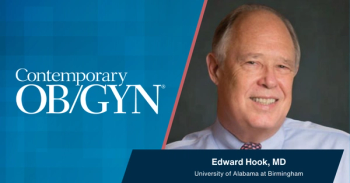
Study Reveals New Information on PMDD Diagnosis and Duration
Premenstrual dysphoric disorder lasts longer than originally thought and is associated with at least four significant symptoms, according to a new research published in the Archives of General Psychiatry.
Premenstrual dysphoric disorder lasts longer than originally thought and is associated with at least four significant symptoms, according to a new research published in the Archives of General Psychiatry.
Dr. S Ann Hartlage, assistant professor of clinical psychology at Rush University Medical Center, and colleagues conducted a prospective survey among patients in general community and clinical settings to determine daily ratings of perimenstrual symptoms and functioning. The study participants included a self-identified treatment-seeking cohort and a representative sample cohort. The researchers asked participants to note symptom severity, including if and how the symptoms interfered with their daily lives.
Hartlage and colleagues found that mood and physical symptoms were not limited to the days prior to menstruation. Instead, they found these symptoms were most severe and caused impairment in the four days before menses and through the first two days of menses for patients in the self-identified group. In the community representative sample, the symptoms occurred 3 days prior to menses through the first 3 days of menses. Hartlage et al. found that affective symptoms were more frequent than depressed mood. Overall, they noted that the most problematic symptoms endorsed were those listed in DSM-IV. To optimize sensitivity and specificity for the diagnosis, the researchers found that 4 or more symptoms were required for predicting patient impairment due to PMDD.
“This is informative for DSM-5 in that the most symptomatic period typically includes the few days before through the first 3 days of menses rather than only the premenstrual phase,” Hartlage and colleagues explained. “Further, we validated the salience of PMDD symptoms included in DSM-IV. Although the number of symptoms most associated with distress and impairment differed between the 2 cohorts, results from the combined cohort suggest that 4 symptoms are linked with impairment from PMDD symptoms.”
What are your thoughts about this new study?
Related Content
References:
Reference
Hartlage SA, Freels S, Gotman N, Yonkers K. Criteria for premenstrual dysphoric disorder: secondary analyses of relevant data sets. Arch Gen Psychiatry. 2012;69(3):300-5.
Newsletter
Get the latest clinical updates, case studies, and expert commentary in obstetric and gynecologic care. Sign up now to stay informed.










